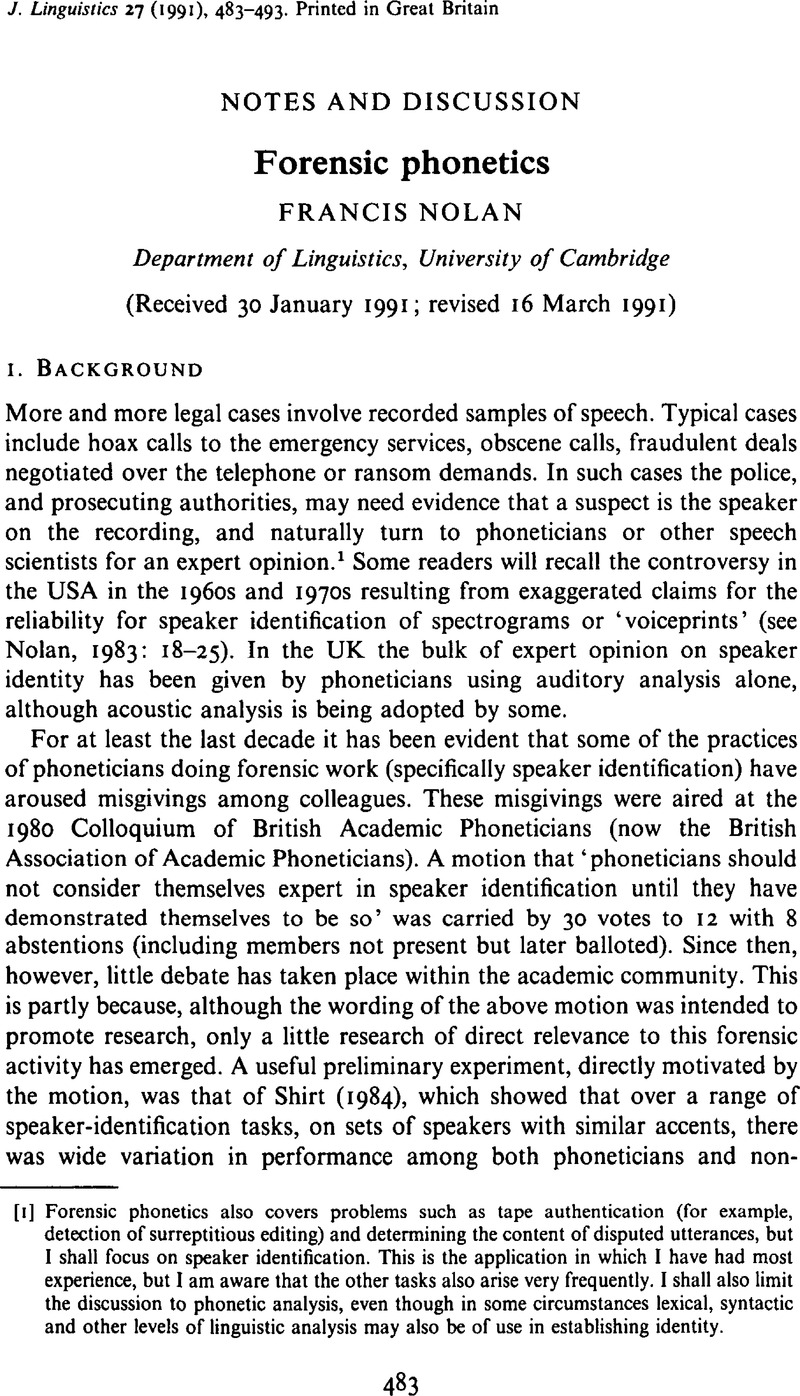Crossref Citations
This article has been cited by the following publications. This list is generated based on data provided by Crossref.
Bradley, David
and
Bauer, Laurie
1992.
Shorter notices.
Australian Journal of Linguistics,
Vol. 12,
Issue. 2,
p.
337.
Lindsey, Geoff
and
Hirson, Allen
1999.
Variable robustness of nonstandard /r/ in English: evidence from accent disguise.
International Journal of Speech, Language and the Law,
Vol. 6,
Issue. 2,
p.
278.
Broeders, A. P.A.
1999.
Some observations on the use of probability scales in forensic identification.
International Journal of Speech, Language and the Law,
Vol. 6,
Issue. 2,
p.
228.
Foulkes, Paul
and
Barron, Anthony
2000.
Telephone speaker recognition amongst members of a close social network.
International Journal of Speech, Language and the Law,
Vol. 7,
Issue. 2,
p.
180.
Mcmenamin, Gerald
2002.
Forensic Linguistics.
Meuwly, D.
2006.
Forensic Individualisation from Biometric Data.
Science & Justice,
Vol. 46,
Issue. 4,
p.
205.
Brunner, Elizabeth Gentry
2009.
The Study of Variation from Two Perspectives.
Language and Linguistics Compass,
Vol. 3,
Issue. 3,
p.
734.
Lawrence, Sophie
Nolan, Francis
and
McDougall, Kirsty
2009.
Acoustic and perceptual effects of telephone transmission on vowel quality..
International Journal of Speech, Language and the Law,
Vol. 15,
Issue. 2,
p.
161.
Duckworth, Martin
McDougall, Kirsty
De Jong, Gea
and
Shockey, Linda
2011.
Improving the Consistency of Formant Measurement.
International Journal of Speech, Language and the Law,
Vol. 18,
Issue. 1,
p.
35.
Lowry, Orla
2011.
Belfast Intonation and Speaker Gender.
Journal of English Linguistics,
Vol. 39,
Issue. 3,
p.
209.
Nolan, Francis
McDougall, Kirsty
and
Hudson, Toby
2013.
Effects of the telephone on perceived voice similarity: implications for voice line-ups.
International Journal of Speech Language and the Law,
Vol. 20,
Issue. 2,
p.
229.
Ramírez Salado, Mercedes
2021.
Imprecisiones terminológicas derivadas de la traducción en el ámbito de la lingüística forense.
Revista de Lingüística y Lenguas Aplicadas,
Vol. 16,
Issue. ,
p.
175.
Hudson, Toby
McDougall, Kirsty
and
Hughes, Vincent
2021.
The Cambridge Handbook of Phonetics.
p.
631.
Ramírez Salado, Mercedes
2021.
Imprecisiones terminológicas derivadas de la traducción en el ámbito de la lingüística forense.
Revista de Lingüística y Lenguas Aplicadas,
Vol. 16,
Issue. 1,
p.
175.
de Jong-Lendle, Gea
2022.
Language as Evidence.
p.
257.





